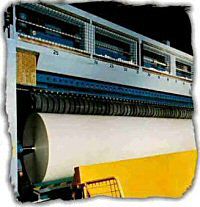Example equipment update analysis - rebuild/replace/add a winder?
Apr 21, 2020

In order to help make that determination, several steps should be taken.
Evaluating a winder update
Let's look at the example of updating an older winder. Though winder requirements and material properties will inevitably differ from mill to mill, the problem-solving steps are often the same:
- Clarify problems and categorize needs. Determine where improvements will have the most impact and make those areas a priority, i.e. product vs. process requirements.
- Discuss alternatives, options and possible consequences with a supplier. A time-cycle study, showing paper machine speed versus winder automation and speed requirements, may also prove helpful.
- After re-evaluating material tension values, winder speed and drum diameters, establish the size of the project. Determine at what point a rebuild would no longer be justifiable, as compared to a new winder.
- If it is determined that individual components can be upgraded without jeopardizing the integrity of the entire winder system, examine and optimize the following areas: Control functions (drive, hydraulics, pneumatics and operator controls); Winding tools (mechanical and controls); Mechanical integrity.
- Adhere to and stay informed of the latest safety and health requirements. For instance, older winders with inadequate nip guarding should be updated immediately.
Choosing between rebuilding, replacing or adding a winder
Once the previous decisions have been made, examine the existing winder to determine whether a rebuild, replacement or addition is the logical choice:
- Check all rollers and bearings for easy and free rotation, vibration, uneven wear, alignment and synchronous speeds.
- Examine critical speed and deflection of major cross-machine components, including increases in speed and web tension beyond original design specifications. Determine whether rolls should be re-balanced or replaced with larger rolls and cross beams.
- Inspect drive systems, unwind brakes, tension control systems and other components and update if necessary. Machine performance inadequacies and roll quality problems rarely originate from just one source.
- Consider adding a full-process control computer for simpler, safer and more efficient operator interface.
- Determine whether the following improvements, which can typically be performed at reasonable cost with high returns, will benefit the winding operation: Installation of state-of-the-art web tension measuring and control systems; Replacement of inefficient brakes with modern braking systems of adequate size; Replacement of brass slides on older rewind carriages with bearings or cam followers; Replacement of drives and brakes if power and torque capabilities are insufficient.
- If purchasing a new winder, choose components that are separate or modular in design so they may be replaced individually as new technology develops.
For more information on updating equipment capabilities, contact your Valmet representative.